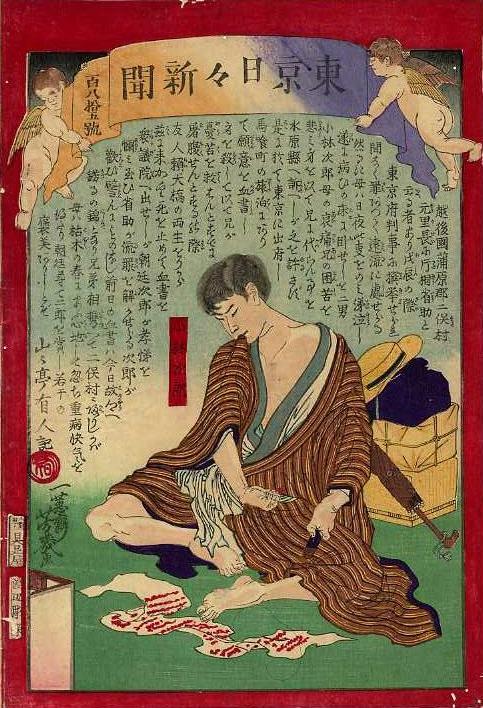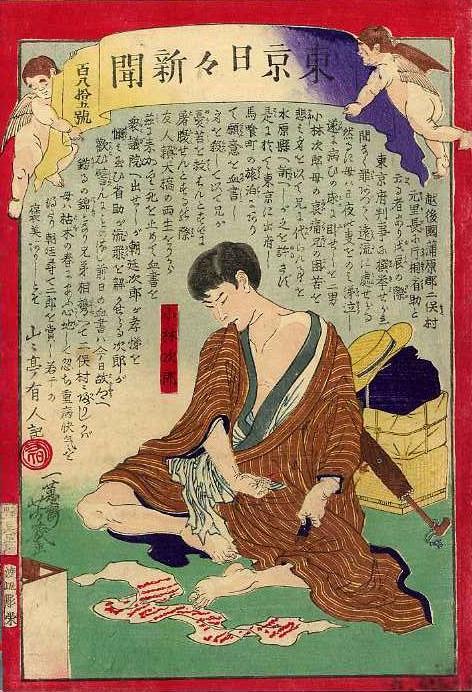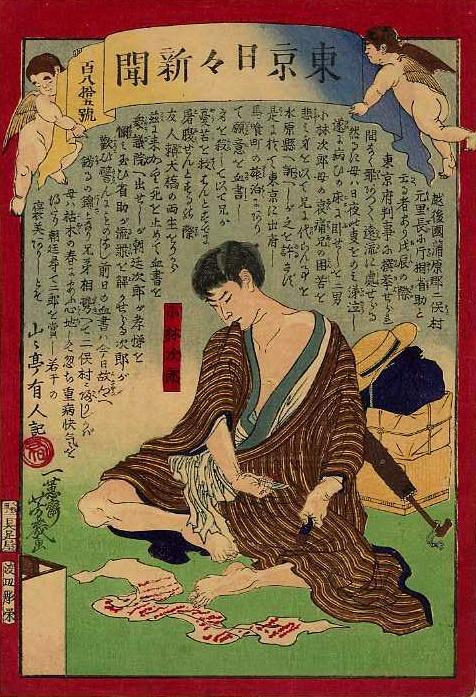
|
Gusokuya edition
Gray frame lower left
Yosha Bunko
|
|

|
Gusokuya edition
No gray frame
Yosha Bunko
|
|

|
Gusokuya edition
No gray frame
Yosha Bunko
|
|
Tokyo nichinichi shinbun
No. 185
Circa 1872-09 (no seal)
Blood petition
Story in brief
Katagiri Shozuke of Eghigo province had been made a judge in Tokyo prefecture at the time of Boshin overthrow of the Tokugawa shogunate. He was then charged with an offense that carried a punishment of banishment. When his mother fell sick with shock, his younger brother, Kobayashi Jiro (name in red cartouche), appealed to Suibara prefecture, but to no avail.
Kobayashi then went to Tokyo, wrote a petition in blood, and was about to slaughter (tofuku = disembowel) himself when friends stopped him. The petition was submitted to the House of Councilors, the [Imperial] Court viewed Jiro's filialty with compassion, and charges against the older brother were dropped.
Having become the subject of laudatory news reports and even souvenir nishikie in Tokyo, Kobayashi returned home somewhat of a celebrity. (WW)
Commentary
Suibara prefecture (水原県 Suibara-ken) was established on Meiji 2-7-27 (1869-9-3) as a merger of what was then Niigata prefecture and most of the province of Echigo. A month later it absorbed a number of other districts in the area. On Meiji 3-3-7 (1870-4-7), concomitant with other affiliation changes in the region and a relocation of its capital from Suibara-machi (now Awagano-shi) to Niigata-machi (now Niigata-shi), the entity was again named Niigata prefecture.
House of Representatives is represented by 衆議院 (Shūgin). The first such institution was established in 1868 as 公議所 (Kōgisho) as the principal body through which the Council of State (太政官 Dajōkan) would exercise its authority. Renamed 集議院 (Shūgin) in 1869, it stopped convening from 1871, during which it was placed under the Ministry of the Left (左院 Sain), then abolished in 1873. The present House of Representatives, also called 衆議院 (Shūgin), dates from 1890, when the bicameral Imperial Parliament was established under the new Constitution.
|